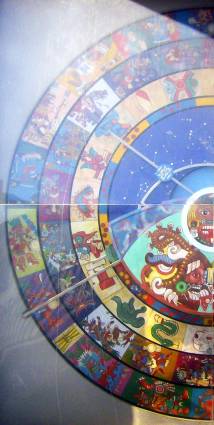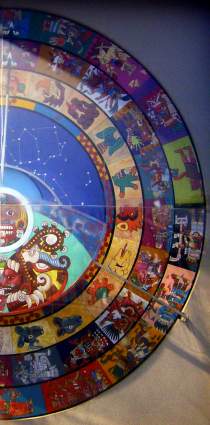The Aztec Civilization: What was it like?
You've probably heard of the Aztec civilization, but if you're like most people, there's a good chance you don't know a lot about it.
This Native American state ruled a large portion of the area that is now Mexico, between about 1428 and 1521.
 |
The empire ended when the area was conquered by the Spanish.
However, this empire is not the homogeneous civilization that you might think of at first. The Mexica formed the head of the empire, and built their capital city of Tenochtitlan where the present day Mexico City is located. Even the Mexica were not culturally homogeneous - some researchers believe that as many as seventeen ethnic groups were among the original tribes that came south to the site of Tenochtitlan.
Organizing a Civilization
They originally formed an alliance with two other cities in the area, called Texcoco and Tlacopan, called the Triple Alliance. However, Tenochtitlan eventually became the most powerful, and began conquering other cities. Cultures in the area at the time the Mexicas arrived in the valley of Mexico included the Tepanecs, Cholcos, Xochimilcos, Tlaxcalans and others, all attempting to gain ascendancy in the valley itself.
Each state in the empire was ruled by its local government, which paid tribute and followed a number of laws dictated by the Triple Alliance. Most of the tribute went to Tenochtitlan, since it had most of the power. This type of empire is called a hegemonic or informal empire.
The territories ruled by the Aztec civilization weren't entirely connected, either. Since some city-states successfully resisted, maps of the Aztec empire often have "holes" in them. This doesn't appear to have affected the strength of the empire, however.
Had Europeans not appeared, the empire may have kept on growing. At its height, the Aztec civilization reached east and west from the Pacific Ocean to the Gulf of Mexico. North-south, the empire stretched from Central Mexico to modern day Honduras, El Salvador and Guatemala.
Read more about the Aztec civilization here.
Ruling an Empire
Groups of families were the basic unit of government in the empire. These groups, called calpulli, had existed long before the Aztec civilization, and were set up to own land. The leaders of the calpulli set up schools for common citizens, collected taxes, and took care of basic group needs. Later calpullis were less family related and more regional, but operated in much the same way.
 |
Leaders of the calpullis formed a city council - possibly the unit with the most power in the ancient Aztec government. Each city council had another council within it - an executive council made of four members. One of them would be the leader of the city, or tlatcani.
The council of Tenochtitlan led the empire itself, and has been compared to the senate of Rome. The leader of this group was the Huey Tlatcani, or the emperor. He was worshiped as a god, and had the support of the city council, major government officials, and the priesthood. The most famous of the Aztec emperors was Montezuma II, ruler when Cortes reached the Aztecs.
Read more about the Aztec government system here.
The famous human sacrifices of the Aztecs were originally infrequent, grotesque to modern eyes. It seems that, during the mid fifteenth century, a series of natural disasters convinced the Mexica that massive sacrifice was needed to satiate their gods. These practices were among the excuses that the Spanish used to attempt to destroy the empire so completely.
The remnants of the Aztec Civilization
Many people in Mexico today can trace their ancestry and some culture back to the Aztec civilization, including the language of the empire (Nahuatl) which is still spoken. If you visit the country today, you'll see a lot of relics of Aztec culture there, including elaborate stone architecture, pottery, jewelry, paintings and more. Place names, religion - even ways of thinking that were seen in the Aztec civilization are still very much a part of Mexico today.
Note: The image on this page is a mechanical clock based on the Aztec calendar of ancient times. It is on display on the grounds of the Roman Catholic Basilica in Mexico City.